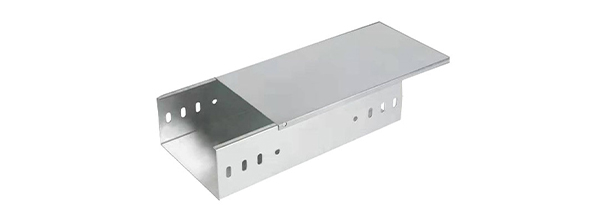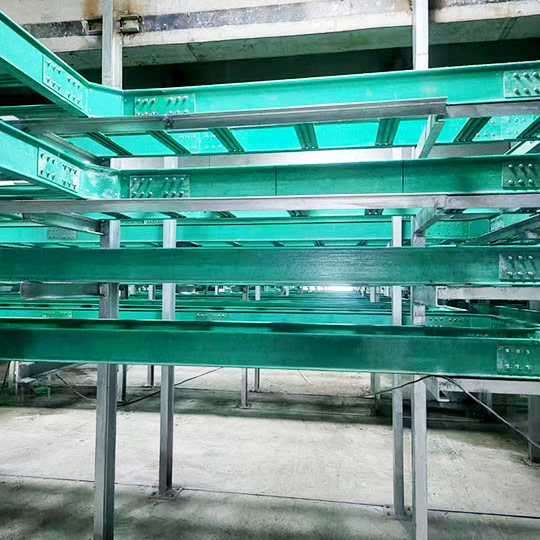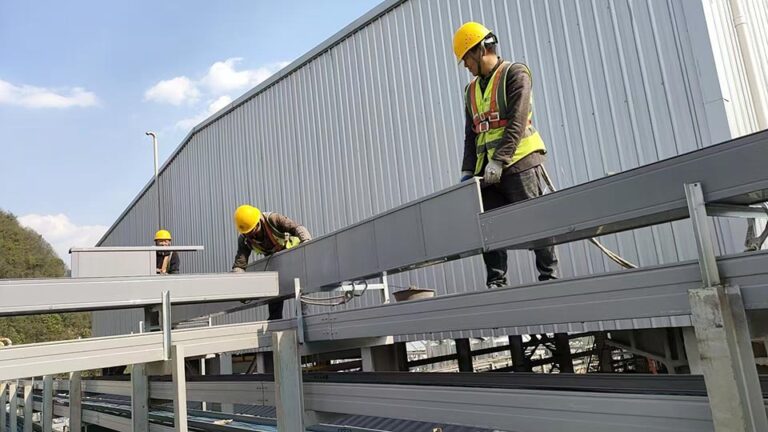Welcome to My Blog!
Before we dive into the content, I’d love for you to join me on my social media platforms, where I share more insights, engage with the community, and post updates. Here’s how you can connect with me:
Facebook: https://www.facebook.com/profile.php?id=61576230391049
Now, let’s get started on our journey together. I hope you find the content here insightful, engaging, and valuable.
Table of Contents
Introduction
In modern industrial and commercial electrical systems, the stainless steel cable tray has become a preferred choice for safe, organized, and long-lasting cable management. Its exceptional durability, corrosion resistance, and ability to handle heavy loads make it suitable for challenging environments where traditional cable trays may fail.
According to a 2024 industry report from MarketsandMarkets, the demand for stainless steel cable trays is expected to grow steadily due to increasing infrastructure and renewable energy projects worldwide. If you are looking for a cable support system that combines strength, safety, and minimal maintenance, stainless steel is a material worth serious consideration.

Common Applications Across Industries
Stainless steel cable trays are used in power distribution systems, manufacturing facilities, offshore installations, and public infrastructure. Their resistance to corrosion and ability to handle heavy loads make them a preferred choice where safety and reliability are paramount.
Types of Stainless Steel Cable Tray Designs
Different designs serve different needs. Stainless steel ladder cable tray is suitable for heavy-duty cable runs with better ventilation. Stainless steel channel cable tray offers a more enclosed option for added protection. Stainless steel perforated cable tray is ideal for environments requiring both ventilation and dust reduction. For extreme safety, a fireproof stainless steel cable tray ensures performance under high-temperature conditions.
Key Advantages for Industrial Use
Choosing stainless steel trays ensures high mechanical strength, a long lifespan, and minimal maintenance. Their resistance to moisture, chemicals, and mechanical impact makes them ideal for harsh environments, reducing total lifecycle costs.
Technical Specifications Table
Below is a general reference for common stainless steel cable tray specifications.
Values may vary depending on project needs and manufacturer standards.
| Specification | Ladder Type | Channel Type | Perforated Type | Fireproof Type |
|---|---|---|---|---|
| Material Grade | SS304 / SS316 | SS304 / SS316 | SS304 / SS316 | SS304 / SS316 Heat-treated |
| Width Range | 100–900 mm | 50–600 mm | 100–800 mm | 100–600 mm |
| Height Range | 50–200 mm | 50–150 mm | 50–150 mm | 50–150 mm |
| Thickness | 1.2–3.0 mm | 1.0–2.5 mm | 1.0–2.5 mm | 1.5–3.0 mm |
| Finish | Polished / Matte | Polished / Matte | Polished / Matte | Fire-retardant Coating |
| Max Load Capacity | 100–300 kg/m | 80–200 kg/m | 80–200 kg/m | 120–250 kg/m |
| Ventilation | High | Low | Medium | Low |
| Applications | Heavy-duty, ventilated runs | Enclosed runs, extra protection | Mixed ventilation and dust control | High fire safety environments |

How to Choose the Right Stainless Steel Cable Tray
Consider factors such as load requirements, environmental conditions, installation space, and cable types. For example, ladder cable trays are preferred for high-volume ventilation, while channel designs suit dusty or chemical-heavy environments. Fireproof stainless steel cable trays are essential where high heat exposure is possible.
Maintenance and Lifespan
Routine inspection and cleaning extend the life of stainless steel cable trays. Their corrosion resistance significantly reduces the need for replacements compared to mild steel alternatives.
Cost Considerations
While the initial investment may be higher than other materials, stainless steel trays offer lower long-term costs due to reduced maintenance, replacement, and downtime.
Conclusion
The stainless steel cable tray is an investment in safety, reliability, and long-term cost savings. From stainless steel ladder cable trays to fireproof stainless steel cable trays, each type serves unique needs in industrial projects. Its unmatched durability and performance make it a smart choice for industries facing harsh environmental conditions. Whether you are upgrading an existing facility or designing a new project, stainless steel offers a future-proof solution for cable management.
FAQ
What makes stainless steel cable trays different from galvanized trays?
Stainless steel trays resist corrosion naturally without coatings, while galvanized trays rely on protective layers that can wear off over time.
Are stainless steel cable trays suitable for outdoor use?
Yes, they perform exceptionally well outdoors due to their weather and corrosion resistance.
Can stainless steel cable trays handle heavy industrial cables?
Absolutely. They have high load-bearing capacities, making them ideal for heavy-duty applications.
Do stainless steel cable trays require special installation tools?
Generally, standard installation tools are sufficient, but using stainless steel fasteners is recommended to avoid galvanic corrosion.
What industries benefit most from stainless steel cable trays?
Marine, chemical, food processing, oil and gas, and manufacturing industries are the top users.



